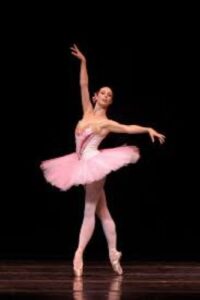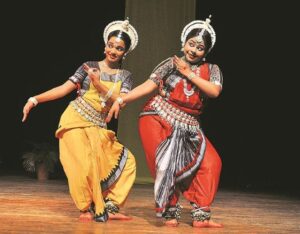All dance forms are sacred and their exponents divine, be it Indian or Western

There is always a mixed reaction of people, when an Indian classical dance is compared to Western classical dance, the response gets even more heated up when an Indian classical dancer is compared to a Western classical dancer. I have been good friends with many Indian and Western dancers from all over the world and have also seen or been a part of their shows and events. Not just that but have always been writing about all kinds of dancers and their shows in my dance columns.
I usually do not get upset with a dancer who speak ill of other dancers as I know dance being a creative medium, a performance done by a particular dancer may or may not be understood exactly the same way by the other or there may be difference in their creative thinking. But when an artiste speaks ill of a particular dance form it hurts and upsets me a lot. Because I believe every dance, be it Indian or Western, classical or folk, martial or ritual, spiritual or entertaining has its own garima (dignity) and that prestige should be respected and not made fun of or be demeaned.
You must be wondering why am I saying this today, well, a few days back a very well known, highly awarded, greatly respected Indian classical dancer stepped on my foot and publicly called dances that I practice; Latin and Ballroom dances as ashleel and if one has to elaborate the word harsh word ashleel, it would mean obscene, indecent and pornographic. She publicly accused me and called me too Ashleel stating “I am the man who is spoiling the minds of the youth and the culture, traditions and values system of our country”. Today I want to start a debate and at the same time want to tell her and all the others who think like her, that please to learn to respect one another’s art form and learn to appreciate each other.
If for a classical dancer, ghungaroos are something one prays to and is worship as well, for a Western dancer their especially designed handcrafted Cuban heel suede base shoes, or ballet shoes are something occupy that stature. Wearing shoes on the dance floor is not a tradition in Indian dance forms but in Western forms it is mandatory. How can wearing shoes on the dance floor be termed as ‘disrespecting the stage and spoiling the culture and tradition.’
In many Indian Classical dances when a male dancer performs on stage, he simply wears a traditional dhoti and covers his bare-chest with jewelry. But he is not called any names whereas a man performing a Western dance in a deep neck body hugging lace shirt is termed as being seductively dressed! Isn’t that strange?
One of the very beautiful Indian classical dances Mohiniattam is called the dance of enchantment or dance by the enchantress, it is also highly seductive in its own beautiful way. Then why cannot a woman performing the classic Cuban dance of love Rumba be sensual and seductive too. Why is she termed ashleel?
The lovely Indian classical dance Manipuri is inspired by stories of Radha Krishna’s Raas Leela which is emotional and playful at the same time. In a similar vein is Latin dance Cha Cha Cha – naughty and playful. It should be appreciated equally. If Radha-Krishna’s Raas Leela is divine, so is Cha Cha Cha, it too should get the respect it deserves.
For events and shows now a days, dancers of all age, size, shape, backgrounds and status come on stage to showcase their talent and to display to their dear ones all that they know. When a Western dance school has a show, it is termed as ‘money making racket’ and ‘putting amateur dancers on stage’ but when for an Indian Classical or a folk dance show, kids or students perform it is termed as ‘Guru Shishya dance performance’. A student is a student, it does not matter what form they are learning, the dance floor is open to all who wish to step on it with fire and vigor. An amateur student will turn professional if he/she practices diligently. A dance school or a gurukul should encourage it’s students to follow the passion which is most needed in the world of dance. Every person practicing the art of dance should get a chance to be on stage, a thousand stage shows will automatically produce a confident dancer.
I believe every dance brings with it a certain culture, tradition and values from its respective country of origin. If women in Indian classical dances wear covered cloths, don’t expect the same from other dances, international dances like Latin and Ballroom Dances are not Indian, if there are short dresses in Brazilian Samba and Argentina Tango then there is also flowing gowns in English waltz and long frilly skirts in Spanish Paso Doble. If we find short, flared and backless dressed as ashleel then please let us all look at our world famous Khajuraho temple, Konark Sun temple and Ajanta Elora where we all will see nude men and women dancing and making sexual poses too, let us not forget we are the land of Kamasutra.
We dancers are fortunate and blessed souls as our passion for dance often helps us travel the world and see, observe and learn various cultures and traditions from all over the globe. So, I suggest when you all travel abroad or browse through Google and YouTube to see various nations to visit or perform, that is the time to learn to travel with our hearts and eyes open and let us see the culture and tradition of that countries too. If we in India have a 5000 plus years history of dance then other counties are no less, they too have history which is dated similar to ours.
In India we worship Lord Shiva in his Natraj form as the god of dance, call Krishna as a dancer and apsaras as celestial dancers then the Greeks have Zeus as their god of dance and Terpsichore as their goddess of dance and on the other hand Japanese have Amenouzume as their goddess of dance. If Raas Leela is considered sacred so is the Hula dance from Hawaii and the Sufi dance from Arabic countries. Remember in all this it is not the dance or the cloths that are ashleel it is the egoistic closed mindset and small heart that are. So, let us all learn to appreciate the world we live in and let us not try and pull other dance forms down. We dancers are a family and let us learn to love and respect this divine family that we all belong to.
Sandip Soparrkar holds a doctorate in world mythology folklore from Pacific University USA, an honorary doctorate in performing arts from the National American University, He is a World Book Record holder, a well-known Ballroom dancer and a Bollywood choreographer who has been honored with three National Excellence awards, one National Achievement Award and Dada Saheb Phalke award by the Government of India. He can be contacted on sandipsoparrkar06@gmail.com





